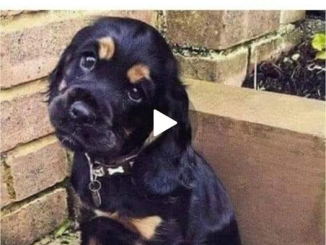Results indicated that not only can dogs detect Covid faster, but they can also do so in a non-intrusive manner – so no need to swab your throat or nose

Dogs can detect Covid-19 faster and more accurately than a PCR test, a new study shows.
Researchers looked at the ability of canines to recognise the virus and its variants, even when they are obscured by other viruses, like those from common colds and flu.
More than 400 scientists from over 30 countries contributed to the study as well as 147 scent dogs, according to the findings published in the Journal of Osteopathic Medicine.
After analysing many studies covering both field and clinical experiments, Professor Dickey and Junqueira found that dogs who are trained to sniff out scents are “as effective and often more effective” than antigen tests.
A total of 53 dogs were trained to sniff out Covid scents, while 37 were not and scientists found that the dogs that were not trained were in some cases “slightly superior” to those that were pre-trained.
“The previously untrained dogs have the advantage that they are not as prone to indicating on scents other than the Covid–19 associated scent,” the paper said.
The results indicated that not only can dogs detect Covid faster, but they can also do so in a non-intrusive manner. This means you won’t need to put a swab in your throat or nose.
How can dogs detect the virus?
This essentially comes down to the dog’s highly evolved nose with its ability to sense out smells quicker.
Dogs possess up to 300 million olfactory receptors in their noses, compared to about six million in humans. And the part of a dog’s brain that is devoted to analysing smells is about “40 times greater” than humans. Canines also have ‘neophilia’, which means they are attracted to new and interesting odours
And so, with all these enhancements, dogs can detect very low concentrations of odours associated with Covid infections.
“They can detect the equivalent of one drop of an odorous substance in 10.5 Olympic-sized swimming pools,” Professor Dickey said. “For perspective, this is about three orders of magnitude better than with scientific instrumentation.”
Scientists also found that in some cases, the animals were also able to detect the virus in pre-symptomatic and asymptomatic patients, “whose viral load was too low for conventional tests to work.”
Professor Dickey has said that dogs can also differentiate Covid and its different variants in the presence of other respiratory viruses. This included the common cold or flu.
“They’re much more effective. In fact, one of the authors that we quote in the paper commented that the RT-PCR test is not the gold standard anymore. It’s the dog. And they’re so quick,” he added. “They can give you the yes or no within seconds if they’re directly smelling you.”

How was the study conducted to see if dogs can really detect Covid-19?
In some studies, the dogs gave a person a quick sniff, sitting down to see if the person has Covid. In another study, the dog was given a sweat sample to smell for a few minutes.
The press release has said that scent dogs, such as beagles, basset hounds and coonhounds are the ideal candidates for sniffing out the virus, given their “natural tendencies to rely on odours to relate to the world.”
But the studies which the researchers analysed showed a variety of dogs were up for the challenge and were able to sniff out the Covid odour. With a few weeks of training, puppies, older dogs, purebred and mixed breeds, both male and female were able to sniff such odours out and “all performed admirably,” the Eureka Alert press release said.
Although there has been success with dogs detecting such viruses, researchers believe there are still many challenges with using dogs for medical diagnoses.
“There’s quite a bit of research, but it’s still considered by many as a kind of a curiosity,” said Professor Dickey.
In conclusion, Professor Dickey and Junqueira said after reviewing the studies, believe that scent dogs deserve “their place as a serious diagnostic methodology that could be particularly useful during future pandemics, potentially as part of rapid routine health screenings in public spaces.”
“Perhaps, most importantly, we argue that the impressive international quality and quantity of COVID scent dog research described in our paper for the first time, demonstrates that medical scent dogs are finally ready for a host of mainstream medical applications,” they added.
Best dog of the year, paws-down

STARK COUNTY — Years of training have come to fruition for a Stark County couple whose dog was named National Shoot to Retrieve Association’s 2023 Dog of the Year on Oct. 28. Dean and Kristy Goodall’s dog, Cowpie, a 5-year-oldGerman Shorthair, took home the honor despite a recent infection that left everyone wondering if she would even survive.
The NSTRA competition, which was held in Amo, Ind., included 192 dogs, Dean Goodall said. He is Cowpie’s handler during competitions.
“You’re facing the best dogs across the entire country and to come out the last dog standing, it’s just an incredible feeling,” Dean Goodall said. “We’ve been so close so many times. But to finally win one, it’s just a dream come true.”
During the trials, two dogs compete against each other at a time. They are put in blinds with their handlers while five birds are planted on 40 acres of land. The dogs then have 30 minutes to find the birds, he said.

“We walk the field, there’s two of us, side-by-side, and your dog has to actually hunt for it,” Kristy Goodall said. “Then, when they smell a bird, they have to stop and point. Once they establish point, they can’t take another step until the bird’s in the air.”
The handler kicks around, until the bird flies into the air and then they shoot the bird. Once the handler shoots, they are not supposed to move, she said.
“Then the dog has to go find the bird, pick it up, bring it in and put it in your hand,” Kristy Goodall said.
Judges score the dog on several criteria, including obedience and retrieval, she said.
During the trials, Dean Goodall could tell Cowpie didn’t have the lung capacity she once had, due to an infection she endured after she competed last year. He wasn’t sure she would be able to finish, let alone win.
“When you’re out hunting, your dogs always have their noses in the grass running full speed through the grass,” Kristy Goodall said. “It’s kind of known to happen where they suck those grass seeds down into their lung tissue. Instead of going down through their esophagus, it actually lands inside the lung, and it creates a huge infection.”
The only solution for Cowpie was surgery, which required a veterinarian to open her rib cage to operate on the infected lung tissue. The surgery couldn’t guarantee she would survive. After the procedure was complete, Cowpie was then isolated and confined for two months while she healed.
“She slowly recovered and then she got pregnant and had puppies last summer,” Dean Goodall said.

The couple started getting Cowpie back into shape when her puppies were old enough to be sold.
“A year ago at this time, I didn’t think she’d be alive,” Dean Goodall said. “Now a year later, here she is winning the trial that almost killed her.”
The Goodalls, who live on a farm near Dickinson, have nine dogs. They train eight of those dogs for hunting and competition.
“You know, you start hunting in September and you’re done in December, and what do you do with your dog the rest of the year?” Dean Goodall said. “National Shoot to Retrieve Association simulates hunting conditions in a trial setting, but it’s a very competitive trial situation.”
They have been competing in the NSTRA trials for more than a decade. Although he quit for a few years, Kristy encouraged him to get back into competing in dog trials.
“I have that competitive drive and I wasn’t going to do this unless I could do it at the very top level,” Dean Goodall said. “So we got after it and we took it serious and we started pushing ourselves and trialing all over and getting better dogs and training better. And pretty soon we were placing in almost every national trial.”
He said Kristy’s success in training horses helped drive them to continue doing better with their dogs.

“Kristy’s hit the top of the world in the horse world — she’s won five world titles in horses,” Dean Goodall said. “Cowpie has finished fourth in the performance national trial before. She’s won two regional championships and now she’s the first dog we’ve owned that’s won a national.”
They run their dogs regularly to help keep them in shape, they said. All their dogs are well trained from basic commands to hunting commands.
“In the fall I’ve been wild bird hunting after work every day that I can get out in the field,” Dean Goodall said. “We end up training our dogs against each other, but they get tired of competing against each other. They know it’s practice. There’s a big difference between the intensity of an actual trial and going out and practicing.”
When they do well during trials, the Goodalls often reward their dogs with a steak or other treat. However, they say the trials are a reward in themselves, since the dogs love to do it.



Leave a Reply